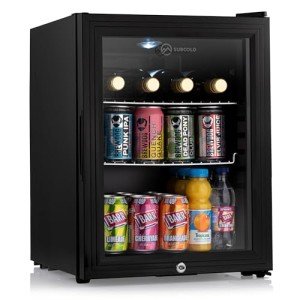The Ultimate Guide to Dual Zone Fridges: All You Need to Know
When it concerns cooking area appliances, a fridge is among the most vital products you need to have. With the improvement of innovation, refrigerators have become more sophisticated, and one of the newest innovations in this field is the dual zone fridge. In this post, we will explore what dual zone fridges are, their advantages, and what to consider when buying one.
What is a Dual Zone Fridge?
A dual zone refrigerator is a kind of fridge that enables you to manage the temperature of 2 separate compartments separately. This implies you can set a different temperature for the freezer and the refrigerator, or even have two separate fridge compartments with different temperature levels. This feature works for storing food products that need different temperatures, such as meat, dairy, and fruits.
Advantages of Dual Zone Fridges
Dual zone fridges offer several advantages, consisting of:
- Improved Food Storage: With two separate compartments, you can store food products at their ideal temperatures, which assists to maintain their freshness and quality.
- Increased Flexibility: Dual zone fridges provide you the versatility to keep various types of food products, such as meat, dairy, and fruits, at their necessary temperature levels.
- Decreased Energy Consumption: Dual zone fridges can help in reducing energy intake by allowing you to set the temperature level of each compartment independently, which means you can shut off one compartment when not in use.
- Longer Shelf Life: By storing food items at their optimum temperatures, dual zone fridges can help extend the service life of your food.
Types of Dual Zone Fridges
There are several types of dual zone fridges readily available in the market, including:
- Top-Freezer Dual Zone Fridge: This kind of fridge has a different freezer compartment on top and a fridge compartment at the bottom.
- Bottom-Freezer Dual Zone Fridge: This kind of fridge has a separate freezer compartment at the bottom and a fridge compartment on top.
- Side-by-Side Dual Zone Fridge: This type of refrigerator has 2 different compartments, one for the fridge and one for the freezer, which are positioned side by side.
- French Door Dual Zone Fridge: This kind of refrigerator has a separate freezer compartment at the bottom and a refrigerator compartment on top, with French doors that open outwards.
What to Consider When Buying a Dual Zone Fridge
When purchasing a dual zone refrigerator, there are a number of factors to consider, consisting of:
- Size: Consider the size of your kitchen and the quantity of area you have readily available for the fridge.
- Energy Efficiency: Look for a fridge with a high energy effectiveness score, which can help in reducing your energy bills.
- Temperature Control: Ensure that the fridge has exact temperature level control, which permits you to set the temperature level of each compartment independently.
- Storage Capacity: Consider the storage capacity of the fridge, including the variety of shelves, drawers, and compartments.
- Sound Level: Some dual zone fridges can be loud, so consider the noise level of the fridge before buying.
Often Asked Questions (FAQs)
Q: What is the distinction in between a dual zone refrigerator and a single zone refrigerator? Beverage Coolers : A dual zone fridge has two different compartments with various temperatures, while a single zone refrigerator has only one compartment with a repaired temperature.
Q: Can I keep meat and dairy items in the very same compartment?A: No, it's suggested to keep meat and dairy products in separate compartments with various temperature levels to make sure food security.
Q: Can I turn off one compartment when not in usage?A: Yes, a lot of dual zone fridges permit you to switch off one compartment when not in use, which can help reduce energy intake.
Q: How do I maintain my dual zone fridge?A: Regular cleansing, inspecting the door seals, and ensuring proper ventilation are necessary for maintaining your dual zone refrigerator.
Conclusion
Dual zone fridges are an excellent alternative for those who desire to save different kinds of food products at their optimum temperature levels. With their improved food storage, increased flexibility, and decreased energy intake, dual zone fridges are an excellent addition to any cooking area. When buying a dual zone refrigerator, think about the size, energy performance, temperature level control, storage capacity, and noise level. With correct upkeep and care, your dual zone refrigerator can last for lots of years and offer you with fresh and healthy food.
Contrast of Dual Zone Fridge Models
Here's a comparison of some popular dual zone refrigerator designs:
| Model | Size | Energy Efficiency | Temperature level Control | Storage Capacity | Sound Level |
|---|---|---|---|---|---|
| Samsung RF28HMEDBSR | 36 inches | Energy Star certified | Precise temperature level control | 28 cu. ft. | 42 dB |
| LG LFX28968S | 36 inches | Energy Star certified | Exact temperature control | 28 cu. ft. | 40 dB |
| Whirlpool WRF989SDHZ | 36 inches | Energy Star accredited | Accurate temperature control | 28 cu. ft. | 45 dB |
| Bosch B36CD80SNS | 36 inches | Energy Star accredited | Exact temperature level control | 28 cu. ft. | 38 dB |
Please keep in mind that the comparison is based upon the requirements of the models and may not show the real performance of the fridges.
Glossary of Terms
- Dual zone: A function that enables you to control the temperature of two different compartments separately.
- Energy Star certified: A ranking that indicates the appliance fulfills energy performance standards set by the U.S. Environmental Protection Agency.
- Precise temperature level control: A feature that allows you to set the temperature level of each compartment independently and properly.
- Storage capacity: The amount of area readily available for keeping food items, determined in cubic feet.
- Noise level: The level of sound produced by the fridge, determined in decibels (dB).

